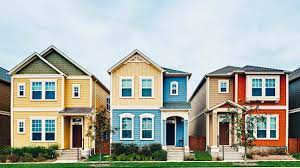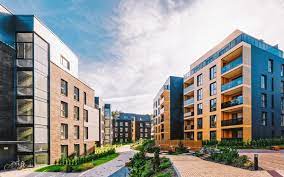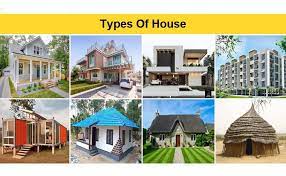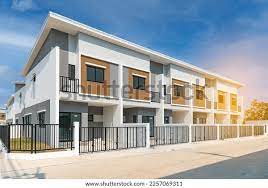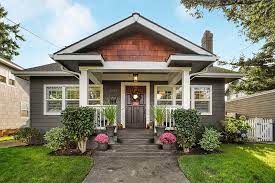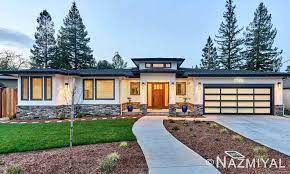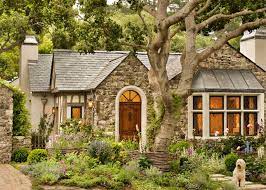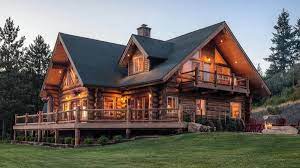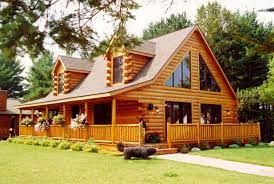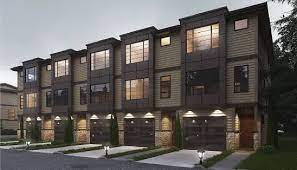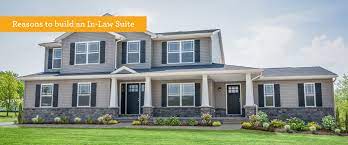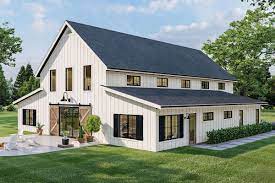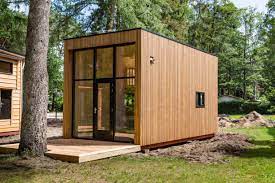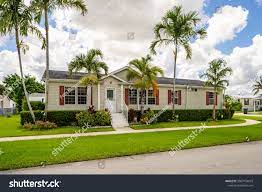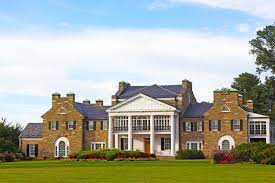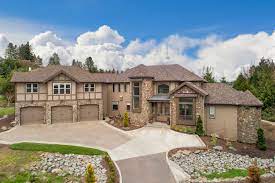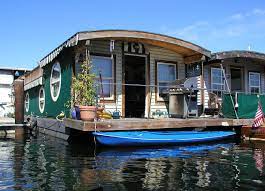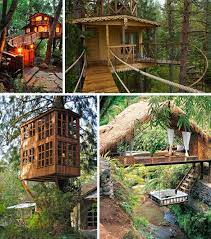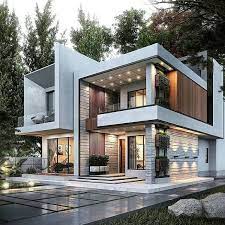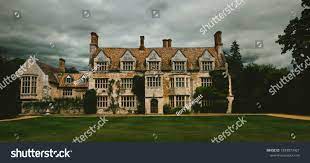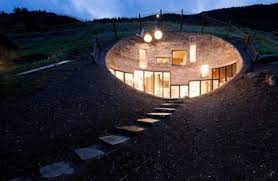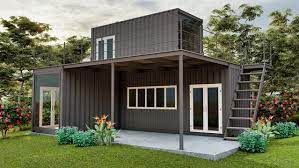This is a list of 31 different types of houses—photos included.
We’re here to help. We’ve compiled a list of the 31 most popular types of homes. Some are very common, like single family homes and ranch-style homes, and some aren’t seen very often. It’s very rare, for instance, to see a legitimate castle being used as a private home in the United States.
If you’re looking for your first home, you’ve probably realized there’s a bunch of different house styles, structures, and terminology.
Understanding these different types of houses can help you understand the pros and cons of each type, as you continue looking for your dream home.
Let’s get started.
The 31 Different House Types (with Photos)
#1. Single Family (Detached)
Single-family homes are completely detached from other structures. They are the most common type of home in the United States, but are less common in crowded urban areas where space is at a premium. Single family homes are popular because of the level of privacy and choice that comes along with owning a private home.
#2. Condominium
Condominiums, popularly known as condos, are similar to apartments, in that there are usually several units in a single building. They’re great in urban areas where single-family homes can’t be built. Condo owners usually pay an association or maintenance fee in exchange for having all repairs and maintenance covered. Unlike apartments, condominiums are purchased, not rented.
#3. Apartment
Apartments are collections of units that are contained in a building. The defining factor that sets apartments apart is that they are rented from a landlord instead of being purchased. Apartments are popular because repairs and maintenance are usually accounted for in the price of rent. The big downside here is that apartment renters don’t end up owning their homes.
#4. Co-op
As the name suggests, co-ops are cooperative housing, which means that residents buy a share of the property’s owning company instead of a piece of the actual property itself. Buying more shares is usually related to having more space in the co-op. This option can be much less expensive than buying a condo or traditional home, but residents must give up quite a bit of freedom to peacefully coexist.
#5. Townhome
Townhomes are individual units that are connected to another unit by at least one wall. Each unit has its own entrance from outside. Townhomes can easily be confused with apartments, because they are often located in multi-unit structures and don’t always look significantly different.
#6. Bungalow
Bungalows are single-story homes that are usually quite small. This type of home usually has a covered porch area, either in front or back. Bungalows are popular in California and other heavily populated areas where real estate is scarce.
#7. Ranch-Style
Ranch homes originated in the United States, and are typically long, low houses with open layouts. Ranch homes can also have two floors, which sometimes leads to them being called raised ranch homes. The style was massively popular in the 1970s and 1980s.
#8. Cottage
Cottages are small homes located usually in the countryside or other rural areas. These homes were made popular by older English homes, because of their straw and thatched roofs. Many people today will refer to a small home as a cottage, regardless of its shape or style, so you may end up with a home that is actually styled as something else.
#9. Cabin
Cabins are wooden homes that are built in remote areas. New cabin builds have become elaborate, and many people have made them full-time homes, where they were once reserved for woodland travelers, hunters, and vacationers wanting to get away from the bustle of daily life.
#10. Chalet
A chalet is a wooden house that has overhanging eaves. They are usually found on or near ski resorts and in mountainous areas like the Swiss Alps. While people can live in chalets full-time, their location in or near mountains usually relegates them to vacation rental duty or as a family’s second home.
#11. Multi-family
Multi-family homes can accommodate more than one family, and can be anything from a duplex to small apartment buildings. One of the most common types of multi-family home are duplexes, which are two separate homes built into one structure.
#12. In-law suite (Basement Suite)
In-law suites, or basement suites, are homes that have been built into existing homes for the purpose of housing an elderly relative that can’t live on their own. Many people use the term in-law suite to describe apartments above garages, separate out-buildings, and other structures that can be used as small apartments.
#13. Barndominium
Barndominiums have grown in popularity as a way for people to live in the same structure as their beloved horses. Their rise has led developers to start building non-horse-related barn homes in structures across the country. It’s important to note that the expense sometimes related to converting an old barn into a home can be immense.
#14. Carriage/Coach House
Carriage houses are homes that were originally built to house horses and carriages. They were built as private stables for wealthy families. These don’t always have to be part of a larger estate, but they frequently are. This may make them an auxiliary purchase to buying the main house, but the upside is that having one can drastically increase the value of a property or home.
#15. Tiny home
Tiny homes have become extremely popular in recent years as a less expensive alternative to a single-family home. They’re also easy to transport to remote locations and can be outfitted with high-end materials, finishes, and interior layouts. Some areas, states, and municipalities have been resistant to tiny homes, as their size doesn’t always allow them to meet certain building codes. Over time, however, advocates for the homes have been able to have those regulations changed or amended to allow for the homes.
#16. Mobile Home
Mobile homes, sometimes called trailers, are prefabricated structures that are built in one location and towed into place. While it’s easy to find and buy a mobile home, it’s important to remember that some banks and lenders steer clear of them. That’s because many mobile homes depreciate in value over time instead of appreciating in value as a single-family home might. That’s not to say that they are bad, or that they are not worth a look, it’s just a note on the longevity and value of mobile homes.
#17. Mansion
Mansions are large, expensive, lavish homes, similar to manors. The big difference here is that mansions can be located almost anywhere, and can be new builds or antique estates. Mansions can be grand, stately homes and can be located in neighborhoods, unlike some of the home styles on this list.
#18. McMansion
McMansion originated as a term to describe the trend of over-done, tacky mansions that were built without any grounding in classical architecture. Many mcmansions are huge, over-the-top structures that have been built to be large solely for the purpose of displaying wealth. Some of the architectural details may not make sense, or may be at odds with other parts of the home.
#19. Yurt
Image credit to Houzz.
Yurts are portable, heavy-duty tents that are covered with water resistant materials and used for dwelling. The structures are usually constructed of wood or bamboo, and are generally round with a cone-shaped roof. In many cases, yurts can be considered tiny homes because of their small size and sometimes single-room construction. It’s important to note, that if you’re considering a yurt for your next home, you may need to build a separate outhouse structure for a bathroom because many do not have indoor plumbing.
#20. Floating on Water Residence (Floating Home or Houseboat)
Houseboats are floating buildings designed to be lived in. There are different types of houseboat, with some being able to propel themselves with an engine and others that require towing to the preferred location. These homes have plumbing and electrical systems that are similar to recreational vehicles (RVs), where the septic system must be pumped into a reservoir for disposal.
#21. Tree House
Just like the structures you may have built as a child, tree houses are built directly into a tree or group of trees. Unlike your childhood treehouses, however, today’s livable treehouses are elaborate, sturdy, and large enough to handle the whole family. Today, there are several luxury hotels and rentals that include luxury treehouses, so there is no shortage of ways to get a feel for how they would fare as a dwelling.
#22. Castle
A castle, as its name suggests, is literally that: A former dwelling for kings and queens, constructed with large stone walls and elaborate structures. Many castles, because of their original construction, are sitting in various states of disrepair. On one hand, this opens up a world of possibilities, as the buyer can rebuild the structure to incorporate elements of old and new, but on the other hand the process is far, far from cheap. Also, like palaces, castles tend to be located in remote places across Europe and Asia, and can be in areas that make them less desirable to foreign buyers.
#23. Palace
Palaces are the homes of various countries’ king or queen. Perhaps the most famous example of a palace is Buckingham Palace, where the Queen of England lives. Living in a palace or turning one into a home is not for the faint of heart. Assuming you can find one for sale in any condition, it will likely require significant updates and upgrades to make it habitable. There’s also the matter of location. Most palaces are located in Europe, sometimes in remote locations, which may not be ideal for an American family or other foreign buyer.
#24. Chateau
Chateaus are large French country homes, sometimes even castles. In some cases, the name of a region or of a product (wine) made nearby are named after the home. Buying a true chateau in the French countryside may be a dream for many, but it’s unattainable for most. Thankfully, many builders have adopted the chateau style and offer similar homes in more local settings.
#25. Villa
The word villa has carried many definitions over the years, but its official definition is a country estate or the country residence of a wealthy person. Many of the villas available today are old, restored homes from the golden ages. Their size and relatively high price make them prohibitive for many buyers.
#26. Manor
Manors are large homes in the country, usually surrounded by vast lands. These homes are usually old and styled in elaborate ways. In the past, manors were almost exclusively owned by wealthy families, but many have slipped onto the market over the years.
#27. Fort
Forts are military structures or groups of structures that provided armament, shelter, and housing for soldiers. Like castles, forts are super expensive and don’t always make the most inviting homes. Their size makes them tough as single-family homes and the age of most forts may mean that significant structural improvements are needed before one can be used as a home.
#28. Underground House
Underground homes have been built beneath the soil, but still have windows and doors to let in light. They carry many benefits, especially in places where the weather can change quickly, because the underground location insulates them from heat, cold, wind, and precipitation.
#29. Cave
Caves aren’t just for bears anymore. With work, some caves have been converted into full-time homes for adventurous people. Of course, saying some work doesn’t truly encompass the full effort that is required to turn a cave into a home. Rock formations and natural erosion inside caves means that there’s no set shape for the house, and the fact that there is natural water and all manner of wildlife living in caves could make it difficult to get a fully sealed structure.
#30. Container Home
Container homes have been built into modified shipping containers. The type, size, and origins of containers can be different from place to place, but the first container homes were built using multi-modal transport containers that are commonly found on railroad cars and ships. Containers can be great for building larger structures, because they are naturally shaped to stack and lock together. This has made them popular for people designing large modern homes, as the container aesthetic works well with multiple individual pieces.
#31. Dome/Round Houses
Image credit to Houzz.
Domes and round houses are slightly different from yurts, in that the dome/curved portion extends all the way to the ground. Many domes and round homes look like a ball that has been cut in half. Domes are popular in remote areas, because they can often be carried into an area in pieces and assembled on site.
What Home Styles Are There?
The names you see below describe several different styles of single-family homes. It’s vital to remember that some sellers do not fully understand what they’re selling and may mislabel a home as something else.
This isn’t the end of the world, and may have no impact on your buying experience at all, but some home types carry price premiums over others, so be sure that you aren’t buying a home for more than it’s worth.
Some builders specialize in one type of home over another, so if there’s a style that truly speaks to you, there’s a good chance that somebody has built a career building it.
You may also find that a home doesn’t fully conform to one type or another, which is increasingly common as people build on and renovate older homes.
- Bungalow – Bungalows are small, usually single-storied homes that commonly have large porches.
- Cape Cod – Cape cod homes were originally inspired by the old thatched-roof cottages in England, but were built with steep roofs and large chimneys.
- Colonial – Colonial homes can take on one of many styles associated with early Americans. Some are French colonial, English
- Contemporary – Contemporary homes can be nearly any style, size, or shape. The term just refers to the style of today. That said, they’re usually built with an eye on energy efficiency and sustainability.
- Cottage – Cottages are small, old-fashioned structures. Many people use the term to describe vacation homes.
- Craftsman – Craftsman homes are usually built out of natural materials and have large porches with gently sloping roofs.
- European – European homes have steep roofs and typically feature stucco and stone.
- Farmhouse – Farmhouse isn’t the name of a particular style. It’s the name of a location of a home.
- French Country – French country homes are sophisticated structures usually made from brick or stone.
- French Provincial – French provincial homes are large, symmetrical houses with steep roofs.
- Greek Revival – Greek revival homes have large columns and symmetrical shapes.
- Log Home – Log homes aren’t just rustic cabins anymore. They can be large, luxurious getaways.
- Mediterranean – Mediterranean homes are usually built with red tile roofs and plaster.
- Modern – Modern homes can take on crazy shapes and can be built with exotic materials. They usually have large, open living spaces.
- Midcentury Modern – Midcentury modern homes took shape in the 1940s and were a popular style across the country for decade. There are usually lots of windows and large, flat surfaces.
- Prairie – Prairie homes were originally developed by Frank Lloyd Wright, and are characterized by long horizontal lines, almost flat roofs, and plenty of windows.
- Queen Anne – Queen Anne homes usually have an asymmetrical facade and can have several prominent shapes and features.
- Ranch – Ranch homes are long, low houses that may have split levels.
- Spanish – Spanish homes are built with clay roof tiles and arched corridors.
- Split-Level – Split-level homes are built with levels that are staggered and connected with small staircases.
- Tudor – Tudor homes are known for multi-gabled roofs and elaborate details.
- Victorian – Victorian homes originated in the early 1800s, and are built to be complex and beautiful.
Conclusion
Knowing the style of home that you want is important, but it’s even more important to be flexible. Many of today’s homes were originally built with a style in mind, but have been renovated and updated to the point that their original architecture is hardly present in any meaningful way.
It’s also important to understand the different terms and what they mean, as there are plenty of people —even real estate agents—that miscategorize homes or use a term that is not appropriate to describe the structure.
Regardless, it doesn’t really matter what a home is called, as long as it’s the one you like and are comfortable with buying.
As we noted earlier, you might end up paying more if it’s an in-demand style, but for the most part, a home’s name is only there as a descriptor. If you like it and it works for you, no title is going to change that.

